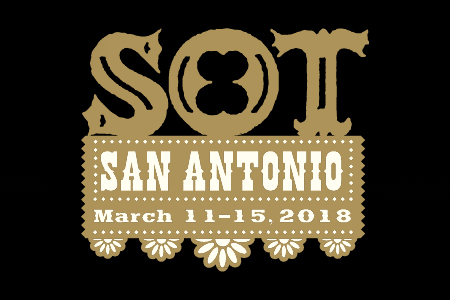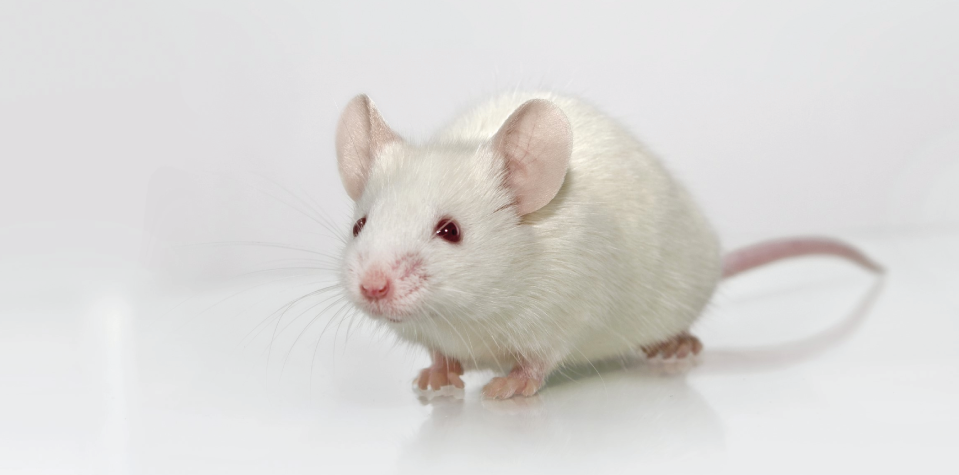 The annual Society of Toxicology (SOT) meeting is the largest toxicological meeting in the world. The 57th Annual Meeting and ToxExpo was held in San Antonio, Texas, and drew more than 6,100 scientists from Europe, Africa, Asia, Canada, and almost every state of the United States.
The annual Society of Toxicology (SOT) meeting is the largest toxicological meeting in the world. The 57th Annual Meeting and ToxExpo was held in San Antonio, Texas, and drew more than 6,100 scientists from Europe, Africa, Asia, Canada, and almost every state of the United States. This is where scientists go to discover all the advances in toxicology from the past year and to meet with colleagues, customers, and service providers. ToxExpo featured 318 exhibiting companies from around the globe. In addition, seventy Exhibitor-Hosted Sessions were held on a wide range of topics. Complete meeting updates and blog coverage are available at ToXchange.
Society of Toxicology 2018
The atmosphere among this year's scientists, vendors, and Contract Research Organizations (CROs) was excited and optimistic. There was a lot of new scientific information to discuss and the presenter content was exceptional.Many of the 170-plus Scientific Sessions, including 2,500 poster presentations and fourteen Continuing Education courses, provided a look at the future of translational research and its applications1.
CROs and other service providers were excited, as some indicators suggested that preclinical toxicology market demand remains strong and may be better compared with a year ago2.
Opening Speaker: Matthew H. Porteus
Opening Plenary Speaker Matthew H. Porteus, of Stanford University, discussed the next wave of toxicological research and understanding in "Developing Genome-Edited Stem Cells for Therapy of Patients: Assessing Efficacy and Toxicology." He focused on genetically-engineered, cell-based therapeutics that require different approaches to evaluate safety and toxicology.rasH2™ Mouse in Carcinogenicity Testing
The use of rasH2™ mice in twenty-six-week carcinogenicity studies continues to be the gold standard in FDA required drug safety carcinogenicity tests. Many posters and presentations this year provided information that further supported, refined, and expanded the use of Tg.rasH2 mice.Dr. Madhav Paranjpe
Dr. Madhav Paranjpe presented during a session on the evaluation of estimated maximum tolerated dose in Tg rasH2™ mouse studies, based on two of his recent publications: "Regulatory Forum Opinion Piece: Retrospective Evaluation of Doses in the 26-week Tg.rasH2 Mice Carcinogenicity Studies: Recommendation to Eliminate High Doses at Maximum Tolerated Dose (MTD) in Future Studies3" — which suggests MTD levels can be reduced by as much as 50% — and "Tg.rasH2 Mice and not CByB6F1 Mice Should Be Used for 28-Day Dose Range Finding Studies Prior to 26-Week Tg.rasH2 Carcinogenicity Studies4."Dr. Paranjpe's also presented a poster, "Comparison of Tumors in Methylcellulose Containing Vehicles to Historical Control Data in Tg.rasH2 Mouse 26-Week Carcinogenicity Studies," which showed that sufficient historical data exists to compare the effects of vehicles or vehicle components on both non-neoplastic and neoplastic findings.
They evaluated the incidence of tumors in male and female mice in the twenty-six-week studies, comparing outcomes where the vehicle contained methylcellulose with vehicles which did not. Their evaluation found that the total incidence of tumors was similar, and therefore the use of more than one control group may not be necessary.
He also presented a second, similarly-titled poster: "Minimal Degenerative and Regenerative Renal Changes in 26-Week Tg.ras.H2 Mouse Carcinogenicity Study."
Novel Uses for the rasH2™ Mouse
Magnetic Field Exposure Trials
An interesting use of rasH2™ mouse, "26-Week Carcinogenicity Study of Intermediate Frequency Magnetic Field Exposure (IFMFE) in RHAS H2 Transgenic Mice5," found that there was no statistical difference between the IFMFE exposed group and the sham group. The MNU (N-methyl-nitrosourea) exposed positive control group performed as expected with a greater than 80% expression rate.Dermal Carcinogenesis Studies
Another expanded use for the Tg.rasH2 mouse is likely forthcoming, as Dr. Hideki Tsutsumi shared new information regarding the use of Tg.rasH2 in dermal carcinogenesis studies. The information is only preliminary, pending publication of a follow-up to their previous paper on "Tumor Promotion by I2-O-Tetradecanoylphorbol-I3-Acetate in an Ultra-Short-Term Skin Carcinogenesis Bioassay Using rasH2 Mice." The data presented here confirmed that Tg.rasH2 can be a very effective tool for dermal carcinogenicity tests.Other Topics at Society of Toxicology 2018
A few other key topics and updates that can be found on the at ToXchange site, including the following highlights:- The Microbiome Emerges in Metabolic Importance Kristine Sue Klos, PhD
- Efforts Underway to Mine Big Data for Better Safety Assessments David Faulkner, MPH, PhD
- Antibody-Drug Conjugates: Are "Smart Bombs" Smart Enough? Saurabh G Vispute, PhD
- Advent of New In Vitro Testing Techniques Providing Insight into Inhalation Toxicity Samantha C Faber, PhD
- Scientific Agenda against Aflatoxins Chiagoziem Anariochi Otuechere, MSc, BS
- Cutting-Edge Research on Mitochondrial Toxicity Cynthia L Browning, PhD
- Posters Explore Efforts to Better Understand Exposures Marie Meagher Bourgeois, PhD, MPH
- Read-Across Uncertainties in Risk Assessments: NAM to the Rescue! Margaret H Whittaker, PhD, MPH, ERT, DABT, CBiol, FRSB
- Cell Cannibalism: The Roles of Autophagy in Neurotoxicity and Neurodegeneration Models—Will You Eat Yourself to Life or Die? Carla Garza Lombo, BS
- Trying to Improve Predictions of Adverse Cardiovascular Event Potential Early in Drug Development Ashley McCord, PhD
- Discovering Nanotechnology's Effects on Cardiovascular Health Can Jin, PhD
















.jpg)

.jpg)
.jpg)
.jpg)
.jpg)





.jpg)


.jpg)
.jpg)

.jpg)


.jpg)





.jpg)

.jpg)




